Sailing might seem like the ultimate freedom on water, but before you hoist those sails, understanding the importance of safety gear is crucial. Whether you’re new to sailing or just getting your feet wet again after a long break, having the right equipment is vital for your safety and peace of mind.
Even the calmest waters can change in the blink of an eye. That’s where safety gear comes into play. It’s not just about having things on board; it’s about being prepared for anything the sea might throw at you. Proper gear can prevent small mishaps from turning into big emergencies.
So, what exactly should you have on board? Think of the basics like life jackets, harnesses, and communication devices. They form the backbone of any safety plan. For beginners, it can be a bit overwhelming stepping into this new world of terms and tools. Stick with me, and I’ll guide you through everything you need to know.
Safety equipment is not just about ticking boxes on a checklist. It’s about understanding how each piece works and how it fits into your broader sailing strategy. Gear is your first line of defense, ensuring every trip is as enjoyable as it is safe.
Life Jackets: Your #1 Priority
Life jackets are non-negotiable. When it comes to sailing, these are the most crucial piece of safety gear you’ll have. They’re designed to keep you afloat and your head above water if you end up overboard, which can happen more often than you might think, especially for beginners.
Choosing the right life jacket isn’t about fashion—it’s about function. You’ve got to find one that not only fits well but suits the type of sailing you’ll do. There are inherently buoyant jackets, inflatable ones, and hybrids. Understanding these types helps ensure you’re picking one that meets your specific needs.
When it comes to features, comfort and ease of movement are top priorities. If it’s uncomfortable or restricts your movement, chances are you’ll be tempted not to wear it, and that’s precisely what you want to avoid.
Sizing is straightforward but important. A jacket that’s too loose might slip off when you need it most. Conversely, one that’s too tight might restrict breathing and movement. Always adjust the straps for a snug fit—test it in safe waters if possible.
Also, keep in mind the regulatory standards set by maritime authorities, which ensure your gear is up to code. Labels often indicate whether a jacket meets these regulations, so give them a once-over before purchasing.
Maintenance is another key factor. Rinse life jackets with fresh water after every use and let them dry completely before stowing them away. Doing so prolongs their life and ensures they’re reliable when you need them.
Harnesses and Tethers: Staying Secure
Once you’re out on the open water, staying securely on your boat becomes a priority, and that’s where harnesses and tethers come in. These tools are designed to keep you attached to your vessel, especially during challenging conditions or when moving about on deck.
Harnesses are essentially wearable devices that strap around your body, similar to climbing gear. They provide a secure point for attaching a tether, which is a connecting line that fastens to a safe spot on the boat. This setup ensures that even if you slip, you won’t fall overboard.
Choosing the right harness means focusing on comfort and durability. Look for padded options that won’t dig into your shoulders. Adjustability is key, so you can get a snug fit without feeling constricted.
The materials used in harnesses and tethers matter too. You want something that’s sturdy and resistant to the harsh marine environment. Stainless steel clips and heavy-duty webbing are popular for their robustness.
Knowing how to properly fit and use harnesses is critical. Practice attaching and detaching the tether in a controlled setting, so it becomes second nature. It’s better to deal with minor learning bumps on dry land than in a turbulent sea.
Also, consider the lengths of tethers. They shouldn’t be so long that you can reach the edge of the deck. Shorter tethers provide greater security by keeping you closer to a stable point if you lose your footing. This simple piece of advice can make a huge difference in an unexpected situation.
Communication Devices: Staying Connected
Being out at sea can feel like you’re a world away from everything, which is part of the adventure but also why having reliable communication devices is vital. Whether it’s to get weather updates, call for help, or keep in touch with other vessels, these tools are lifelines when you’re on the water.
VHF radios are a staple on boats, offering direct communication with nearby ships and marine authorities. They’re relatively simple to operate and essential for reporting issues or getting emergency broadcasts. Make sure you’re familiar with using the channels; channel 16 is often reserved for distress calls and hailing, so keep that in mind.
EPIRBs, or Emergency Position Indicating Radio Beacons, are another crucial device. They send distress signals with your exact location to rescue teams, pretty much anywhere around the globe. Registering your EPIRB with authorities is a must, ensuring it’s linked to your vessel details when activated.
Satellite phones offer broader communication coverage, especially if you plan to sail further offshore. They can be a bit of an investment, but invaluable for longer trips where regular network signals fall short. Check which satellite service provider covers the regions you’ll be sailing in best.
Complying with regulations around communication devices isn’t just ticking off boxes – it’s about ensuring you’re prepared for emergencies. Regularly check your devices to ensure they’re in working order and understand how to use them properly in different scenarios. This preparedness can make all the difference when you need to communicate swiftly and clearly.
First Aid Kits and Health Supplies
When setting out on a sailing adventure, having a well-stocked first aid kit is not just recommended; it’s essential. You never know when you might face a minor injury or health concern out on the open water, and being prepared can keep small issues from ruining your trip.
A solid first aid kit should cover the basics: bandages, antiseptic wipes, gauze, adhesive tape, and scissors. Beyond these, consider including items specific to the marine environment, like seasickness tablets and sunburn relief options. Tweezers and safety pins can also be incredibly handy for dealing with splinters or securing bandages securely.
It’s not enough to just have these supplies—you’ve got to store them properly. The marine environment is, after all, wet and salty. Keep your kit dry with a waterproof container, and place it somewhere easily accessible, so it’s always at the ready when you need it most.
It’s also worth investing your time in a basic first aid course. You don’t need to become a medical professional overnight, but knowing how to handle more common sailing injuries like cuts and scrapes, heat exhaustion, or even sprains can be incredibly valuable. Quick, effective action often makes all the difference.
Lastly, regularly check expiration dates on medications and other perishable items in your kit, replacing them as needed to ensure everything’s in prime condition. And never underestimate the importance of having a plan in case someone needs serious medical attention and you have to return to shore quickly.
Navigation and Safety Equipment
Every sailor needs to be able to find their way around the water, which is why having the right navigation and safety equipment is crucial. Compasses and GPS devices serve as your primary tools for this, each offering a unique benefit. A compass gives a reliable direction even when technology fails, while GPS provides exact coordinates, helping you plot your courses with precision.
Safety isn’t just about where you’re going but also about being aware of what’s around you. Depth sounders alert you to shallow waters that could pose hazards, and having radar can help identify other vessels or obstacles, especially in low visibility situations. Knowing how to read these devices accurately ensures you’re proactive about any potential risks.
Visibility is not just a daylight concern—nighttime and adverse conditions make reflective gear and proper lighting essential. Deck lights, navigation lights, and personal strobes increase safety by making you and your boat visible to others, reducing the risk of collisions.
To make the best use of this equipment, regular drills and training make a world of difference. Practicing with your compass and GPS, doing safety drills under various conditions, and ensuring everyone on board knows how to respond in different scenarios concretely enhance safety and confidence.




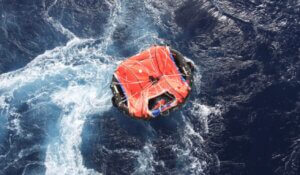
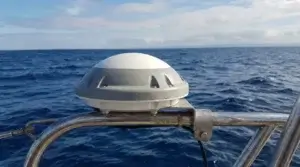
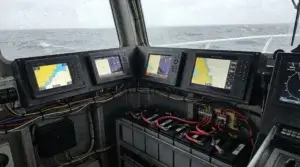

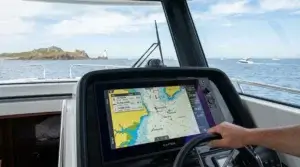
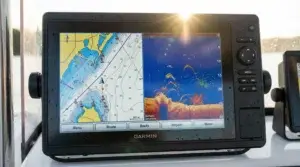


This is such a well-thought-out piece – I really appreciate the focus on practical safety rather than just listing gear.
I do have a couple of questions though.
When it comes to choosing between an inflatable life jacket and a traditional one, how do you decide which is better for coastal vs. offshore sailing? Also, have you found any brands of tethers or harnesses that balance comfort and durability well? This info will be really helpful if you are trying to build a solid setup but don’t want to buy twice.
Looking forward to hearing your take!
Thank you so much—I’m really glad you appreciated the practical angle! Great questions, too.
When choosing between an inflatable life jacket and a traditional foam one, the key factors are environment, conditions, and personal comfort. For coastal sailing, inflatables are often preferred because they’re less bulky, which means more mobility and less fatigue over long days. Just make sure you’re diligent about maintenance—check the canister and firing mechanism regularly.
For offshore sailing, though, I lean toward traditional foam life jackets or hybrid models with built-in harnesses. They’re bulkier, yes, but they’re also more reliable in rough conditions where auto-inflation might fail or where you might get thrown into the water unconscious. Durability and no-fail buoyancy matter more out there.
As for tethers and harnesses, Spinlock and West Marine’s PRO series both strike a nice balance between comfort and durability. Spinlock in particular uses ergonomic designs that sit well over long periods, and their double-tether systems are great for safe movement around the boat.
Totally agree—it’s better to build smart once than buy twice. Let me know if you’re weighing any specific setups or want gear tested in certain conditions!